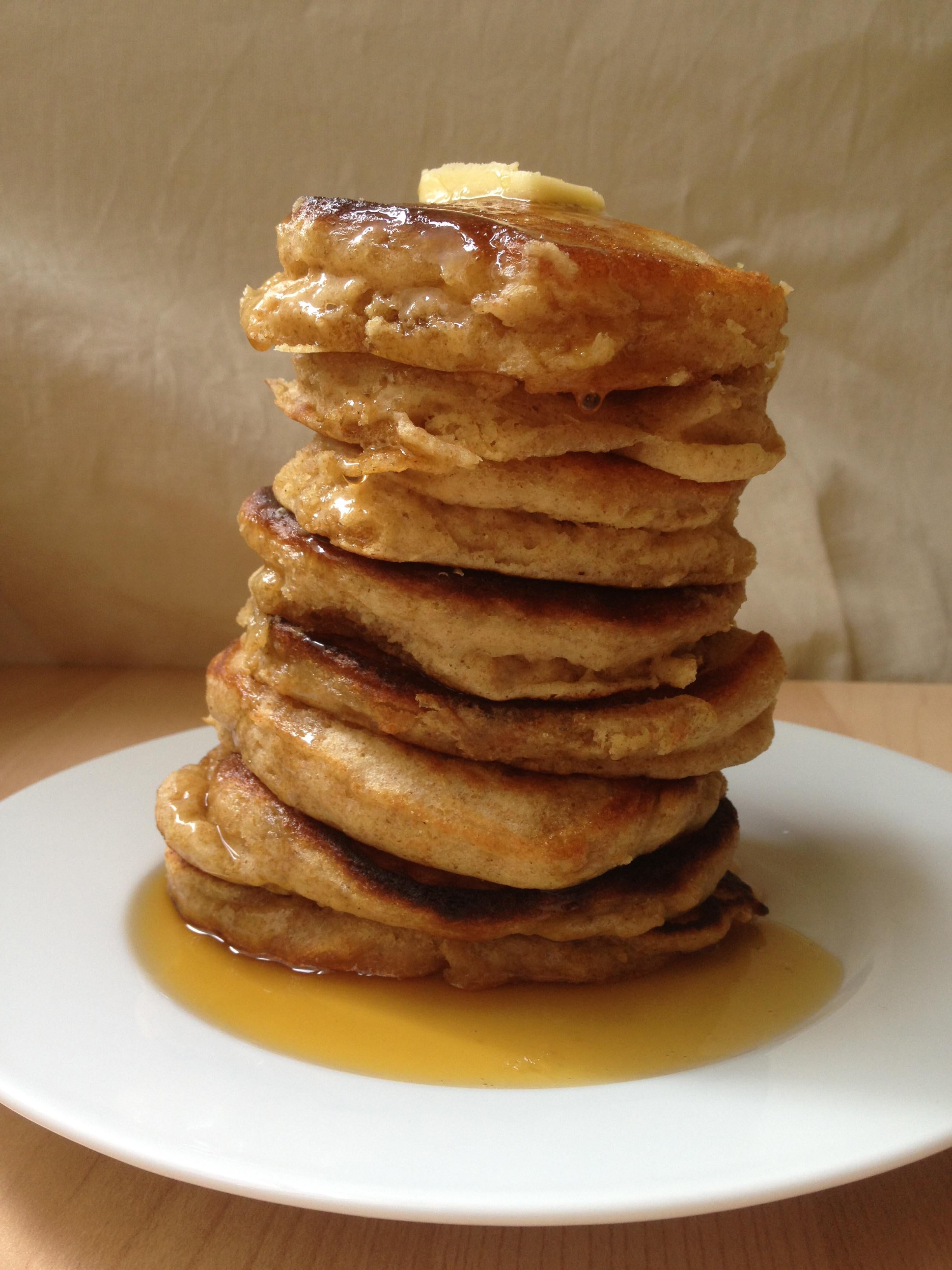You’re Doing It Wrong is appearing on Tuesday rather than Wednesday this week, because it’s not just any Tuesday—it’s Shrove Tuesday, also known as Mardi Gras, also known as Pancake Day. In the days of near-universal Christianity in Western Europe, the day before Ash Wednesday was a chance to load up on all the rich foodstuffs verboten during Lent. Since pancakes are heavy on eggs, milk, and sugar (all ostensibly sinful ingredients), people made a tradition of eating them before the fasting season began.
These days, Shrove Tuesday isn’t so much a last-gasp gastronomic orgy as a good excuse for anyone, Christian or not, to eat pancakes. Not that you need an excuse; pancakes are easy, economical, and beloved by virtually everyone. What’s more, they’re inexplicably impressive—despite requiring very little effort, homemade pancakes tend to make people fall over themselves with gratitude and admiration.
Sadly, though, misinformation about pancake-making abounds. Many recipes call for separating the eggs, whipping the whites, and then folding them into the batter at the last minute. This supposedly results in a light, fluffy pancake—but it’s utterly unnecessary. You don’t need to go halfway toward making a meringue to make good pancakes; you just need to get some chemistry right.
Which is why buttermilk is absolutely crucial for good pancakes. Buttermilk is fermented milk (despite the deceptive name, it’s no fattier than regular milk); thanks to the fermentation process, it’s thicker and more acidic than regular milk. (In a pinch, you can approximate buttermilk at home by adding lemon juice or apple cider vinegar to milk—1 tablespoon per cup of milk—and letting it sit at room temperature for a few minutes.) Buttermilk is terrible for drinking but a godsend for baking; the chemical reaction between the acid in buttermilk and the base in baking soda is what prevents pancake batter (and other quick bread batters) from being too dense, much as the chemical reaction between Derek E. Miller’s hardcore guitar and Alexis Krauss’ diaphanous soprano prevents Sleigh Bells from being too intense.
Once that chemical reaction has taken place, ethereal pancakes are guaranteed—so long as you don’t overwork the batter. Stir pancake batter as little as possible: As soon as all the streaks of flour are absorbed into it, you’re done. If you try to stir until no lumps remain, you’ll activate the gluten in the flour and end up with tough, rubbery disks.
The recipe below, passed down from my father, was a Saturday-morning mainstay in the You’re Doing It Wrong household when I was a kid. (With one change: I’ve made half the flour whole wheat; as previously mentioned, whole wheat flour not only tastes good, but adds a tiny amount of nutritional value to otherwise nutritionally irredeemable baked goods.) These pancakes take well to additions: Sprinkle blueberries, banana slices, chocolate chips, pecans, or whatever other bite-sized goodies you like on top of the batter just after you’ve ladled it into the skillet.
Buttermilk Pancakes
Yield: About 16 pancakes (4 servings)
Time: 20 to 30 minutes
1 cup all-purpose flour
1 cup whole-wheat flour, or more all-purpose flour
2 tablespoons sugar
2 teaspoons baking powder
1 teaspoon baking soda
1 teaspoon salt
2 large eggs
2 cups buttermilk
¼ cup extra-virgin olive oil or peanut oil
Oil or butter for cooking the pancakes
Butter and maple syrup for serving
1. Put a large skillet over medium heat, or heat a griddle to medium. Whisk together the flours, sugar, baking powder, baking soda, and salt in a medium bowl. Beat the eggs in a separate large bowl, then stir in the buttermilk and oil. Add the flour mixture to the buttermilk mixture and stir just until combined; the batter should be lumpy.
2. Put about a tablespoon of oil or butter in the skillet or on the griddle. When it’s hot, begin to pour the batter, a scant ¼ cup at a time, into the skillet or onto the griddle; try not to let the pancakes touch one another. When the bottom of the pancakes are golden brown, the edges are firm, and the tops are bubbly, after about 3 minutes, flip the pancakes and cook until golden brown on the other side, about 2 minutes. Repeat with the remaining batter, adding more oil or butter to the skillet or griddle for each batch. Serve hot with butter and maple syrup.
Previously in You’re Doing It Wrong:
Frittata
Brownies
Chili
Granola
Pizza
